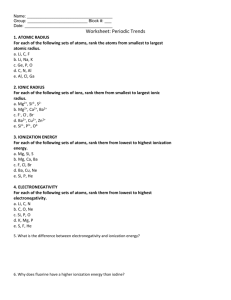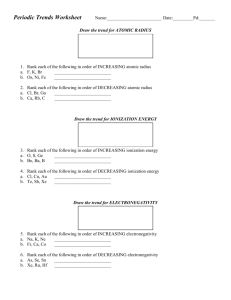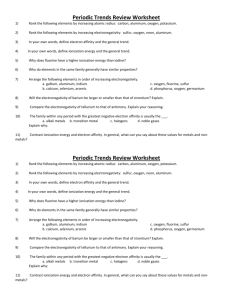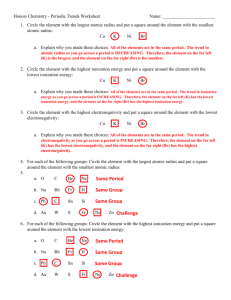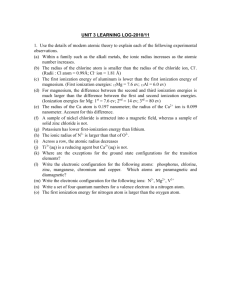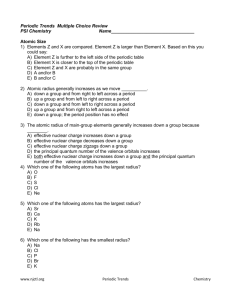Periodic Trends Practice Worksheet - Chemistry
advertisement
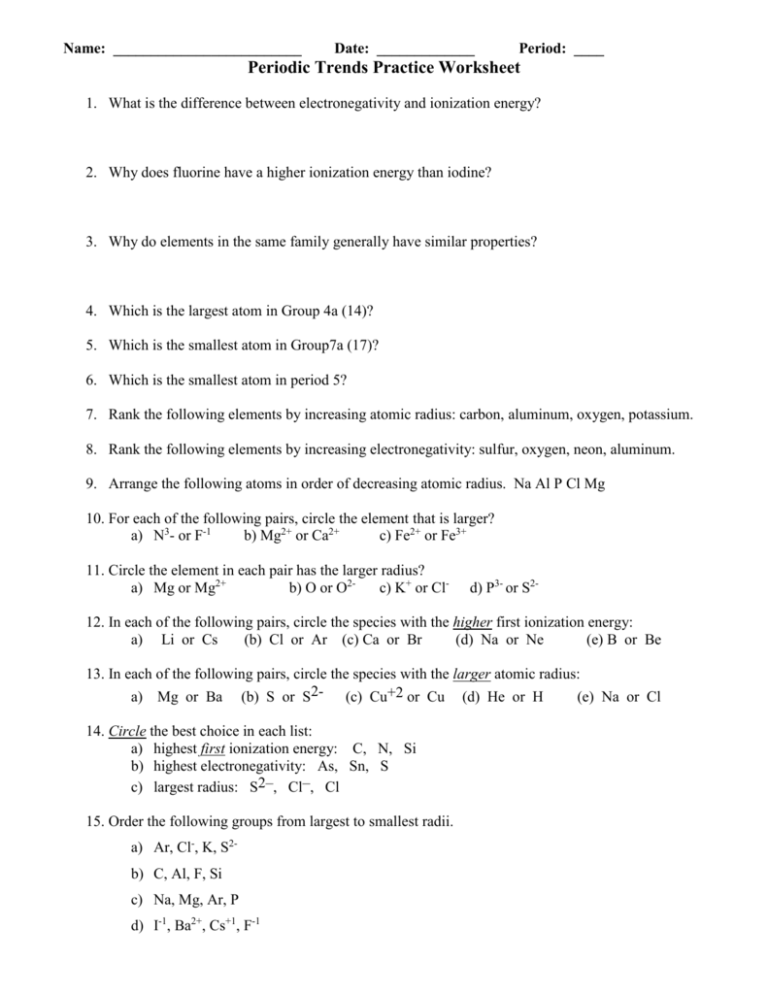
Name: _________________________ Date: _____________ Period: ____ Periodic Trends Practice Worksheet 1. What is the difference between electronegativity and ionization energy? 2. Why does fluorine have a higher ionization energy than iodine? 3. Why do elements in the same family generally have similar properties? 4. Which is the largest atom in Group 4a (14)? 5. Which is the smallest atom in Group7a (17)? 6. Which is the smallest atom in period 5? 7. Rank the following elements by increasing atomic radius: carbon, aluminum, oxygen, potassium. 8. Rank the following elements by increasing electronegativity: sulfur, oxygen, neon, aluminum. 9. Arrange the following atoms in order of decreasing atomic radius. Na Al P Cl Mg 10. For each of the following pairs, circle the element that is larger? a) N3- or F-1 b) Mg2+ or Ca2+ c) Fe2+ or Fe3+ 11. Circle the element in each pair has the larger radius? a) Mg or Mg2+ b) O or O2c) K+ or Cl- d) P3- or S2- 12. In each of the following pairs, circle the species with the higher first ionization energy: a) Li or Cs (b) Cl or Ar (c) Ca or Br (d) Na or Ne (e) B or Be 13. In each of the following pairs, circle the species with the larger atomic radius: a) Mg or Ba (b) S or S2- (c) Cu+2 or Cu (d) He or H (e) Na or Cl 14. Circle the best choice in each list: a) highest first ionization energy: C, N, Si b) highest electronegativity: As, Sn, S c) largest radius: S2–, Cl–, Cl 15. Order the following groups from largest to smallest radii. a) Ar, Cl-, K, S2b) C, Al, F, Si c) Na, Mg, Ar, P d) I-1, Ba2+, Cs+1, F-1 16. For each of the following sets of atoms, rank the atoms from smallest to largest atomic radius. a. Li, C, F b. Li, Na, K c. Ge, P, O d. C, N, Al e. Al, Cl, Ga 17. For each of the following sets of ions, rank them from smallest to largest ionic radius. a. Mg2+, Si4-, S2b. Ca2+, Ba2+ , Mg2+ c. Br-1, Cl-1, F-1 d. Ba2+, Cu2+, Zn1+ e. Si4-, P3-, O2- 18. For each of the following sets of atoms, rank them from lowest to highest ionization energy. a. Mg, S , Si b. Ba, Ca, Mg c. Br, Cl, F, d. Ba, Cu, Ne e. He, P, Si 19. For each of the following sets of atoms, rank them from lowest to highest electronegativity. a. C, Li, N b. C, Ne, O c. O, P, Si d. K, Mg, P e. S, F, He
